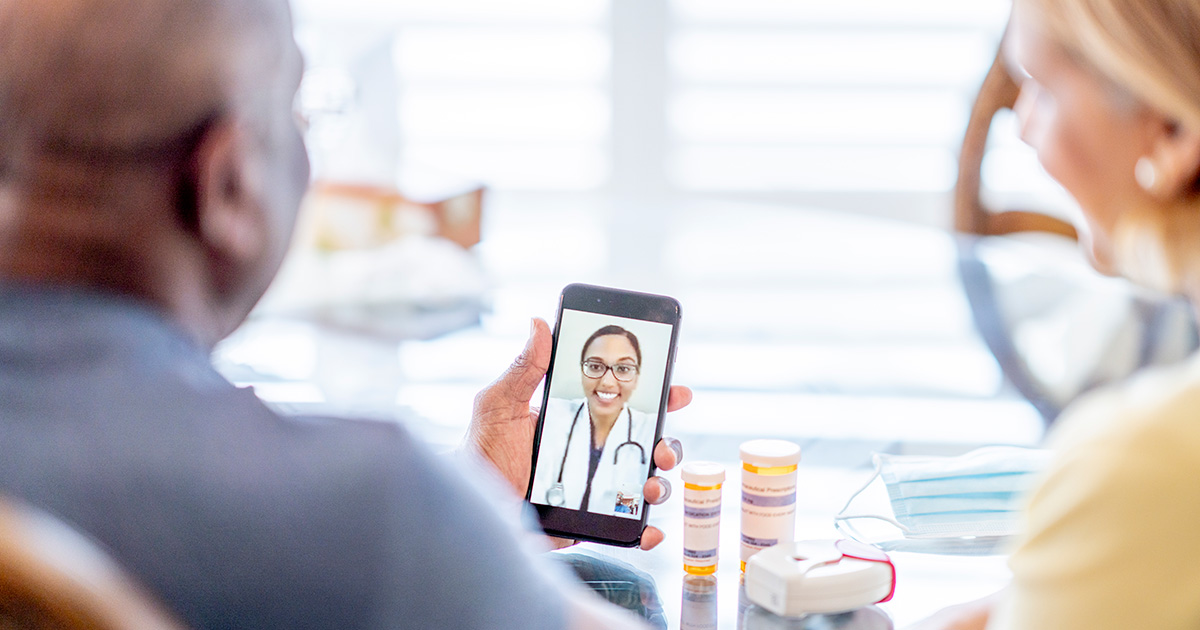How Mobile is Taking Over Healthcare
It truly feels that everything can be accomplished on the go now, doesn’t it?
Typically, we are surrounded by at least a device or two at any point throughout the day. We all expect instant gratification and access (there is no frustration quite like a weak WiFi connection!). Plus, there is an app for basically anything under the sun.
All of this makes it no surprise that mobile technology rules our lives.
The good news is that mobile access keeps us better informed—we can educate ourselves in nearly topic. We also have the ability to stay better connected with others. Does Grandma live in another state? How about another country? It’s not as big of a deal as it once was, thanks to messaging apps, photo sharing, and video calls. (But, sadly, it won’t deliver her freshly baked cookies to your oven).
Electronics have taken over the learning in our schools, jobs in our workplaces, and even shopping at our grocery and retail stores. Mobile connectivity delivers a level of convenience that we never knew existed.
On the flipside, once people have a taste of the digital mobile experience, a standard of expectation sets in.
Across all industries, we anticipate a business to have a pretty website that is easy to navigate and that we can pull up on our smartphones. Bonus points if it has a well-designed app to give us what we want with the click of a finger.
We want what we want, when we want it. Because of this, even more traditional verticals are seeing a shift toward digital accessibility—including healthcare.
Rise of Mobile
Mobile has infiltrated nearly every aspect of our lives. It’s estimated that over 5 billion people around the world have mobile devices, with more than half of those being smartphones.
You don’t have to look further than Amazon.com to see how comfortable we’ve become with accomplishing things (whether it be gathering information, checking our bank accounts, or even buying paper towels) as we wait in school pick-up lines or lounge on our couches.
That’s why getting on the mobile train has become important for all businesses—not just those that cater to our consumer goods needs.
Think about it. If you have a B2B business, the decision-maker you are selling to is also a consumer in all other aspects of his or her life. This means that they too are used to the conveniences of mobile connectivity, and this should be considered when planning your approach.
The message is clear across the board: Get mobile or get left in the dust.
Mobile in Healthcare
This same concept applies to healthcare.
Though historically considered an expert-driven industry, in recent years it has become more patient-centric. In fact, this budding digital age has a lot to do with that. Because patients are able to educate themselves more on symptoms, disorders, treatments, and services, they are able to play a bigger role in care plans.
They also have access to more choices—choices about which practices to visit and specialists to see. More and more, patients are requesting specific referrals.
And they aren’t just hopping on their laptops or desktop computers to conduct online searches. Many are reaching inside their pockets and scrolling on their phones.
In fact, a study found that 52% of smartphone owners use their phones to gather health-related information. According to ReferralMD, this “includes information about a specific medical problem or procedure, or diet, nutrition, and fitness-related information. Other popular health topics include:
– prescription or over-the-counter drugs,
– alternative treatments,
– health insurance,
– depression, anxiety or stress,
– and a particular doctor or hospital.”
It’s also helpful to note that healthcare is something we all need at some point or another. It isn’t (or, at least, shouldn’t be) a luxury, but rather a necessity that extends beyond socio-economic barriers.
Many individuals and families in lower-income areas don’t have access to a computer, so their mobile device becomes their primary resource.
Because of this, it’s imperative that healthcare institutions provide a user-friendly mobile experience.
Website
As we’ve discussed before, your practice’s website is one of the most impactful parts of your business. It is likely the first interaction that existing and potential patients have with your office, and a bad experience could deter someone from enlisting your services.
And, because many of us are looking at websites via our smartphones as we’re on the go, it’s critical that your website be responsive (and by that, we mean mobile-friendly). This is a step that will take place during the design and development stages of creating a website, so putting the proper technology resources behind it is an important investment.
Patients want a mobile website that is easy to navigate, simple to read (no copy-heavy pages, please!), and visually pleasing. All of these things will help a patient find the information they are looking for as quickly as possible, which will give you a better chance of converting them into a customer.
Forms
Of course, when we talk about a positive mobile experience, we don’t only mean your website. Mobile is taking over many aspects of healthcare, and patients want things to be as convenient as possible.
This includes scheduling and adjusting appointments, getting reminders, and completing paperwork ahead of appointments.
Have you ever been a new patient at a physician’s office and had to sit in the waiting room with a stack of papers to fill out before being seen? Yeah, it’s not fun.
This means wasting precious time out of your day while hurrying to fill in personal information that is both important to your care and potentially sensitive.
It’s more preferable to have the option to provide your medical history, reasons for visit, or signature for HIPAA and release forms prior to your appointment. This way you can complete it at a time and place that is convenient for you.
In order to make this happen, practices need to team up with a trusted digital partner. That’s why IntakeQ creates and delivers mobile-friendly (and HIPAA-compliant!) intake forms to offices and their patients.
Plus, with IntakeQ’s comprehensive offerings, you can even integrate scheduling, patient communication, and automatic appointment reminders into your digital approach to care.
Looking for ways on how you can make your website become more mobile friendly? Download our free guide and discover the 10 easy steps.
The Bottom Line
Mobile has started taking over other areas of healthcare as well. Practitioners depend on mobile connectivity just as much as patients. Telehealth (or virtual care) isn’t a new concept, but it’s become much easier to access thanks to mobile apps.
This allows a practice to manage its patients’ health from afar, keeping appointments open for cases that require in-person attention. All of this translates to more patients being treated and staying healthy.
As technology advances, so must the ways we interact with patients. That’s why it’s essential for practices and businesses in the health and wellness sector to explore their digital presences and how they are offering mobile accessibility to patients.Need help getting started? Feel free to reach out to start a discussion about introducing mobile-friendly digital forms to your practice.







